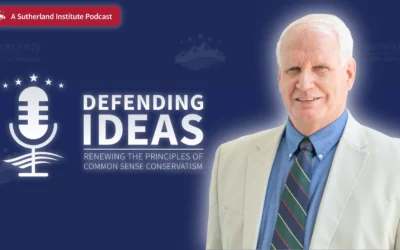
Written by The Likely Voter
February 1, 2024
![]()
The Utah State Legislature is considering SJR 03, a joint resolution on the success sequence. Sutherland Institute released two publications in 2023, “The Utah Family Miracle” and “Support for the Success Sequence,” that outline key data about the benefits of the sequence and support from likely voters in Utah for teaching it in schools.
Sutherland has developed a list of frequently asked questions to equip those following the success sequence discussions to have accurate information. We have listed them below, and a printable version can be found here.
Success Sequence FAQs
Q: What is the success sequence?
The success sequence is a term that refers to three life milestones: completing high school, getting a full-time job, and waiting to have children until marriage. Research shows that of people who take these steps, 97% live above the poverty level in adulthood, and the majority will reach the middle class or higher.
Q: Where does the concept of the success sequence come from?
The concept originated with experts at the Brookings Institution, a nonprofit research organization in Washington, D.C. Other organizations, including the American Enterprise Institute, Institute for Family Studies, and federal government agencies, have also studied the success sequence and found that it consistently correlates strongly with avoiding poverty.
Q: Does the success sequence promote a particular political or ideological point of view?
No. Because the success sequence has been researched and confirmed by organizations considered to be both left-leaning and right-leaning, and due to the data showing a consistent correlation between its steps and avoidance of poverty, the success sequence is grounded in evidence rather than ideology. Additionally, 73% of likely voters in Utah support teaching the success sequence in schools, including majorities of Republicans, Democrats and independents. The success sequence has support across the political spectrum.
Q: If an individual does not follow the success sequence, is it too late for them?
No. The available evidence points to the conclusion that the success sequence helps those who do not initially follow it, just like it helps those who do. For instance, recent research shows that among mothers unmarried at childbirth who graduated from high school, got a full-time job, and were married by their child’s 15th birthday, 9% were in poverty. By comparison, the poverty rate was 78% for mothers unmarried at childbirth who completed none of the success sequence steps in that time. Individual circumstances vary, and life outcomes are influenced by factors beyond the success sequence. But the success sequence is an effective way to stay above poverty, not a judgment of past choices or a moral prescription.
Q: Are there resources for those who haven’t attained these three milestones?
There are support resources available for individuals aspiring to achieve these three milestones. If an individual doesn’t graduate from high school, obtaining a GED can serve as a valuable step toward getting back on track. Workforce training programs and job opportunities for people in any circumstance are also available at jobs.utah.gov. Additionally, for those contemplating marriage, numerous resources are accessible to assist couples in preparing for healthy relationships – visit strongermarriage.org for more information.
Q: Why are state leaders discussing including the success sequence in school curriculum?
Our education system strives to prepare the next generation to lead successful lives in a variety of ways. Students may or may not be aware of how strong an effect their personal decision-making (with respect to the success sequence milestones) has on life outcomes such as avoiding poverty. Providing the evidence-based framework of the success sequence simply provides students with additional information they can incorporate as they make decisions about their lives. For many individuals, this may seem second nature. However, for young adults and students, it is important to teach them these steps to ensure they are getting the help and information they need.
Q: Does the sequence benefit individuals from all walks of life?
Data suggests that following the success sequence into adulthood benefits all adults, regardless of their background or characteristics. For example, among millennial adults who completed the success sequence by their 30s, one study reported poverty rates of 3%, 3% and 4% among whites, Hispanics and blacks, respectively. For women and men the poverty rates were 3% and 2%, respectively. For individuals raised in a low-income family the poverty rate was 6%, and for those who did not graduate from college it was 5%. For people raised in a non-intact family the poverty rate was 5%. Regardless of who you are or where you came from, the success sequence offers an effective path to avoiding poverty.
Q: Does the order of the steps in the success sequence matter?
Adhering to the success sequence strongly contributes to economic stability, and the order in which these life milestones are achieved can impact some people. However, the available evidence suggests that, on average, completing all three steps is more important than the order in which they are completed. While alternative paths to success exist for young adults, the success sequence offers a straightforward route to avoiding poverty.

For more information, visit sutherlandinstitute.org/success.
Read More
Protecting property rights against government overreach
While governments can continue to regulate land use, these regulations and fees must be justified by a government interest and proportional to the effect of the development’s impact on that interest.
Do we need to care about the Utah State Board of Education?
For any Utah voters who also feel like K-12 public education is headed in the wrong direction, learning about the candidates running for a seat on the Utah State Board of Education (USBE) is a wise choice this election season.
Defending education choice the right way
Education choice has exploded in popularity across the nation in recent years. So why does it remain a contentious point of debate in some parts of the country?



